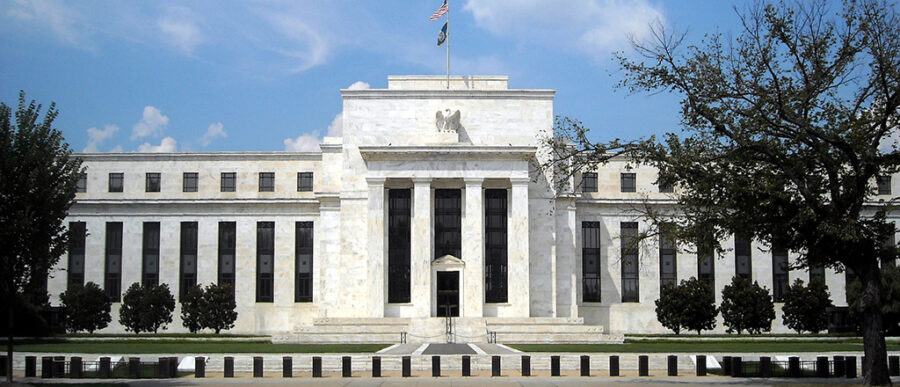Financial markets are facing a multitude of big questions — and as the new U.S. Federal Reserve chairman, Jerome Powell, settles into office, all eyes will be on his testimonies to Congress this week. Will he continue the paced approach of his predecessor, Janet Yellen, to both interest rate increases and winding down the Fed’s bloated balance sheet, or take a more aggressive, hawkish path? Do the macroeconomic conditions warrant four rate increases this year, or just three as planned? Is the financial system sufficiently prepared for failures, and will the Treasury department’s recommendation for a separate Chapter 14 in the Bankruptcy Code for distressed financial companies address the situation adequately?
Peter Conti-Brown, Wharton professor of legal studies and business ethics, and Lisa D. Cook, a Michigan State University professor of economics and international relations, delved into those and other related issues on the Knowledge at Wharton show on Wharton Business Radio on SiriusXM channel 111. (Listen to the podcast at the top of this page.)
Following are key takeaways from their discussion.
Three or Four Rate Increases This Year?
The continued strength of the U.S. economy could prompt the Federal Reserve to raise interest rates four times in 2018 instead of the three increases of 0.25% each it has indicated. “Four rate increases could be a possibility, and certainly that’s being discussed,” said Cook. Others that have talked of a fourth rate increase include New York Fed president William Dudley, and economists at Goldman Sachs and JP Morgan. Driving those expectations are the projections of increased government spending of $300 billion over the next two years, and tax cuts of $1.5 trillion over the next decade. The current Fed funds rate is in a range of 1.25% to 1.5%.
“This period of remarkable stability is really something to behold.”–Peter Conti-Brown
However, the possibility of a faster trajectory for rate increases depends on the periodic macroeconomic data releases from the government. Cook pointed also to indications that might be gleaned from the Monetary Policy Report the Fed released on February 23 and Fed chairman Powell’s much-anticipated testimonies on February 27 to the House of Representatives and the Senate on March 1. The Monetary Policy Report gave no hint of a fourth rate increase in 2018, although it did note that enabling trends exist: The rate of inflation has remained below its 2% target, and “the labor market appears to be near or a little beyond full employment at present.”
How Long Will Stability Last?
The mood has to be upbeat if one looks at macroeconomic trends right now and in the immediate past as opposed to speculating about the future, said Conti-Brown. “What a time to be a bank. What a time to look at unemployment numbers and even inflation. It is just an extraordinary thing that inflation has been so low for so long,” he added. “This period of remarkable stability is really something to behold.”
Those reasons for optimism could have an ominous side, though. “Periods of such peace, low unemployment and especially growth of bank balance sheets and bank profitability always have me keyed into thinking about the crash that could follow,” said Conti-Brown, noting that he wasn’t necessarily making a prediction about a crash, but was merely pointing out that financial systems and economies are cyclical.
Consumer sentiment is running high, too, noted Cook. But she also found that puzzling, given that wage growth has not been “tremendously high.” Some of that consumer enthusiasm comes from the low unemployment rate and a stabilization of the labor force participation rate, but “there is nervousness and anxiety as well,” she said.
Preparing for Bank Failures
Even as the economic outlook is positive, it is important not to lose sight of the lessons from the Great Recession of 2008 and strengthen the corrective legislative actions taken in its aftermath — notably, the 2010 Wall Street Reform and Consumer Protection Act, or the Dodd-Frank Act. “We’re always in a situation where banks can fail,” said Conti-Brown. “If you ever imagine yourself in a world where there can be no such thing as failure, that’s not a free market system. You’ve got to be able to have systems where there will be failure.” The Dodd-Frank Act aims to ensure that if a bank fails, that could be managed in a way that does not threaten the entire global financial system.
Here, Conti-Brown lauded the Treasury department’s recommendation to create a new Chapter 14 in the Bankruptcy Code for distressed financial companies. A Treasury report released last week stated that Dodd-Frank’s provision of an Orderly Liquidation Authority (OLA) may be insufficient to deal with the unique challenges of large, interconnected financial companies. At the same time, the Treasury department recommended retaining the OLA “as an emergency tool for use under extraordinary circumstances,” but with “significant reforms” to the OLA process to address shortcomings.
“Financial firms or others would not reform if there were not this possibility [for bankruptcy], and if there were no possibility of failure.”–Lisa D. Cook
Conti-Brown and Cook described the Treasury department’s approach in addressing potential bank failures with the Chapter 14 provision as retaining “the baby and the bathwater.” Creating a separate pathway for bankruptcy makes sense, said Cook. “Financial firms or others would not reform if there were not this possibility [for bankruptcy], and if there were no possibility of failure,” said Cook. “There has to be orderly bankruptcy, and orderly reorganization.”
Tools for the Next Downturn
Will the Fed have adequate tools to deal with the next recession? Conti-Brown and Cook are not so sure. In responding to the last recession, the Fed used “major unconventional tools” such as low interest rates and buying mortgage-backed securities from banks to “encourage people to spend more, get more money in the economy and get the economy back on its feet again,” Conti-Brown recalled. That mop-up of mortgage-backed securities caused the Fed’s balance sheet to bloat from some $800 billion before the financial crisis to $4.5 trillion.
The Fed under Yellen had committed itself to a gradual winding down of that balance sheet. Speculation abounds on how the new chair Powell would follow that agenda. “There are a lot of people who think this has got to go faster. A lot of people think this shouldn’t happen at all,” said Conti-Brown.
“We are not sure still how the ammunition that we’ve used in the past will act in the next downturn,” Cook said. Historical and statistical pointers do show that “there is still a downturn coming; we certainly don’t know when it is.”
In the previous downturn, it helped that interest rates were high enough and offered room to be lowered. “But interest rates won’t be high enough possibly for that tool to be useful [in the next recession],” said Cook. “If the rate increases evolve as planned — two, three or four this year — this may not be a tool that’s available.” The latest tax cuts have also introduced a new uncertainty, she added. “We typically would not think that in full employment, such a fiscal stimulus would be advised.” Market watchers have expressed concerns that the tax cuts and increased government spending could lead to higher inflation rates.



